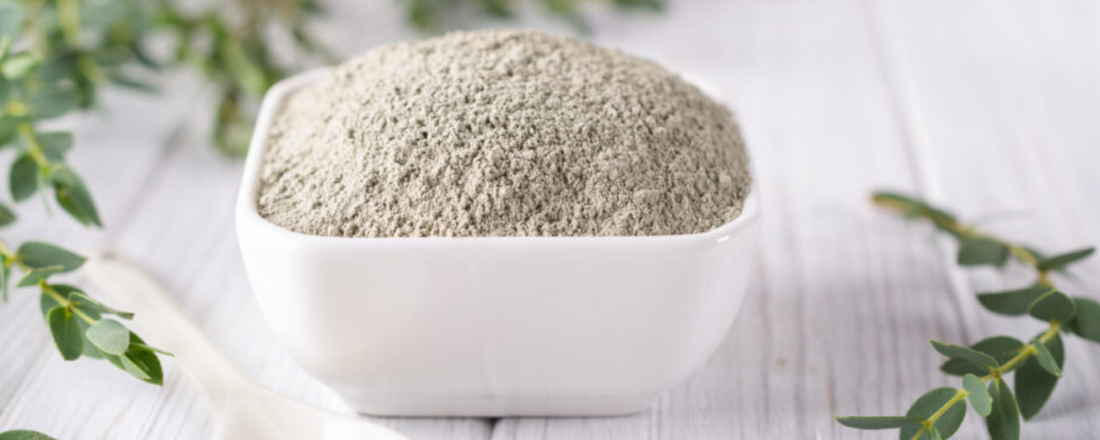
What is Bentonite Clay?
Share
In order to answer that, we need to go back in time (tens of millions of years!) to Cretaceous Period. After huge surges in volcanic activity, leading to a series of eruptions, most of North America was covered in volcanic ash. A great deal of the ash fell into the Upper Cretaceous shallow sea and covered most of North America, including Wyoming, USA. The alteration of the volcanic ash in the seawater produced a substance called Montmorillonite clay, which Bentonite is predominately made up of.
Bentonite was given its name by the pioneer geologist Wilbur C Knight in the 1800’s, in part due to the location of where it was first mined – the Benton Shale in Montana, Wyoming. The production of the clay in Wyoming comprises 90% of all Bentonite processed in the USA and almost half of the worlds’ total production.
Bentonite through the ages
It has been suggested that the first peoples to have used Bentonite for a medicinal purpose was the Indigenous Americans, who called it ‘Ee-wah-Kee-‘ also known as ‘Mud-that-heals’.
Fast forward to the 1860s, during the American Civil war, the cavalrymen at Rock Creek were reported to have used Bentonite as a replacement for soap and also to help soothe their horses’ painful hooves!
Which of our products include bentonite clay?
You will find 70g in the Make Your Own Face Mask Kit. Along with the bentonite clay the kit comes with ground oatmeal and rose water.
Why do Sweet Cecily’s use Bentonite Clay?
Bentonite clay is comprised of many different minerals including; magnesium, sodium and calcium.
Bentonite clay is a toxin sucker
It has been reported that the clay has negatively charged Ions, which gives it the remarkable ability to absorb positively charged toxins from our bodies such as dirt, dust and grime, which helps to unblock the skins pores.
Bentonite clay is an acne buster
Acne is mainly caused by the sebaceous glands enlarging and the over production of what is called Sebum (ever touched the T-Zone after a day of work and your hand is glistening? That oily residue is sebum)
Now, Sebum has its uses, the body produces it to make sure our skin and hair doesn’t get too dry. However, when our bodies are subject to hormonal changes (puberty, pregnancy and contraceptive pills) it can cause our glands to start over producing sebum. When the excess sebum mixes with your dead skin cells, it forms a blockage in the follicle, which leads to white heads, black heads and pimples.
Bentonite clay absorbs any excess sebum without leaving your skin deprived of natural oils, making it extremely effective in the fight against spots!
Healing, brightening, cleansing, softening and exfoliating
As we’ve seen above, Bentonite has some pretty powerful abilities, but it doesn’t stop there. Bentonite has been known to be a great aid to the healing of broken skin, even making it seem brighter and softer if used in a Face mask once a week.
Not only that, it can be used as a gentle exfoliator. It has enough abrasive qualities to banish any dead skin cells lying about, but is not as harsh as many high street scrubs, which can cause micro abrasions in the skin, leaving it open to marauding bacteria.

